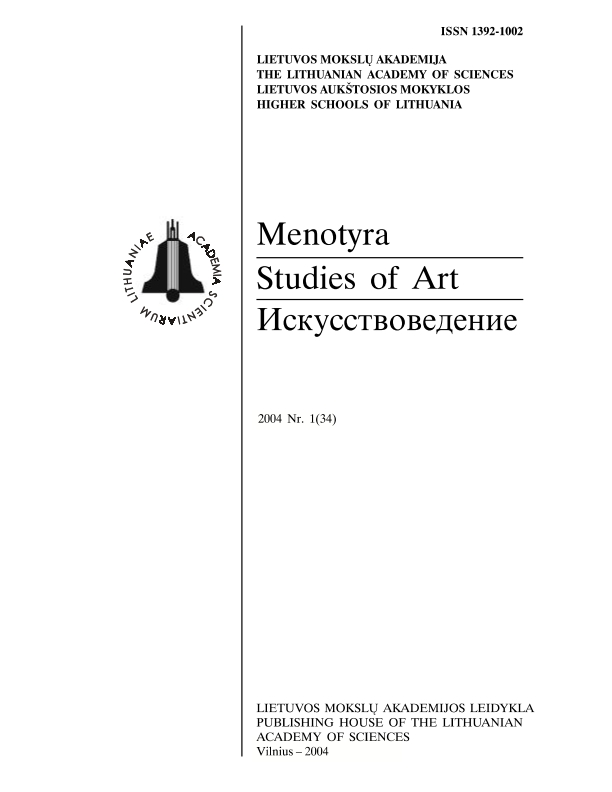Grażynos Bacewicz VII styginių kvartetas: strukturinių principų pasirinkimas
The string quartet no 7 by Grażyna Bacewicz: the selection of structural principles
Author(s): Gražina DaunoravičienėSubject(s): Cultural history, Music, Recent History (1900 till today)
Published by: Lietuvos mokslų akademijos leidykla
Summary/Abstract: The compositional text of the 7th string quartet (1965) by the Polish composer Grażyna Bacewicz (1909-1969) is analyzed. The analysis focuses on the special methodology of research, which is based on the model of the stages of the universal creative process and the corresponding analytical attitudes: Dispositio - Elaboratio - Decoratio (lot. "placement" - "preparation" - "decoration"). According to the prevailing mainstreams of the latest creation period by Grażyna Bacewicz, the 7th quartet presents her own brand of sonorism and revises her composing technique as coming to experimentation with dodecaphonic, collage and aleatoric techniques. G. Bacewicz's atonal, aphoristic, sometimes ironic instrumental style includes the use of general strategies of classical structural types (forms) and a kaleidoscopic variety of sound, timbre and articulation patterns. The Quartet is composed in a clear, partly symmetric and strict cyclic form with a traditional contrast of tempo organization (allegro - grave - con vivezza). The first movement (allegro) opens with four different manners of agogic characteristics: the viola plays saltando, the cello - come percussions, the first violin - in tremolo and the second violin has pizzicato chords. The changeable harmonic texture is based on the principle of the chords' constructivism (symmetrical chords' structures) and soft discipline of the 12-tone technique. In the second movement (grave), as in the allegro movement, Bacewicz employed many different string effects and created it in a meditative mood embodying the compositional material in an arch-like form. For the first time in this score she clearly makes the melody with its thematic and tune density as the most important and suggestive compositional factor. Con vivezza (the finale) is based on the rondeau pattern (a neoclassical metaphor). This movement begins with a dodecaphonic symmetrically made 12-tone series which was composed in a pointillistic manner. The active movement has relatively simple resources of musical material, combined with highly suggestive energy of instrumental articulations. The constructivism of composing, the structuring according to the principle of symmetry, multilinear macro- and microforms, and their various realizations in sonoristic compositions can also be seen in G. Bacewicz's scores and show her masterly writing for string instruments. The article integrates and summarizes the author's interest in the methodology of musical analysis and particularly in the important Dispositio- Elaboration - Decoratio model used for the 20th century music analysis.
Journal: Menotyra
- Issue Year: 2004
- Issue No: 1(34)
- Page Range: 44-51
- Page Count: 8
- Language: Lithuanian

